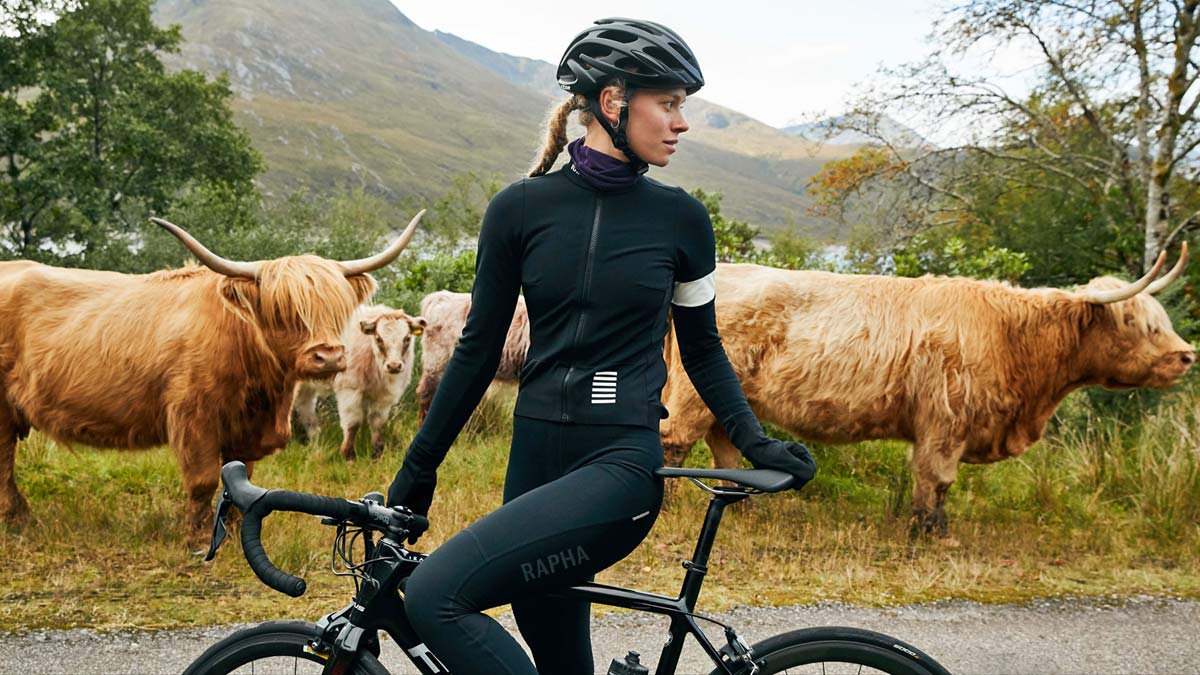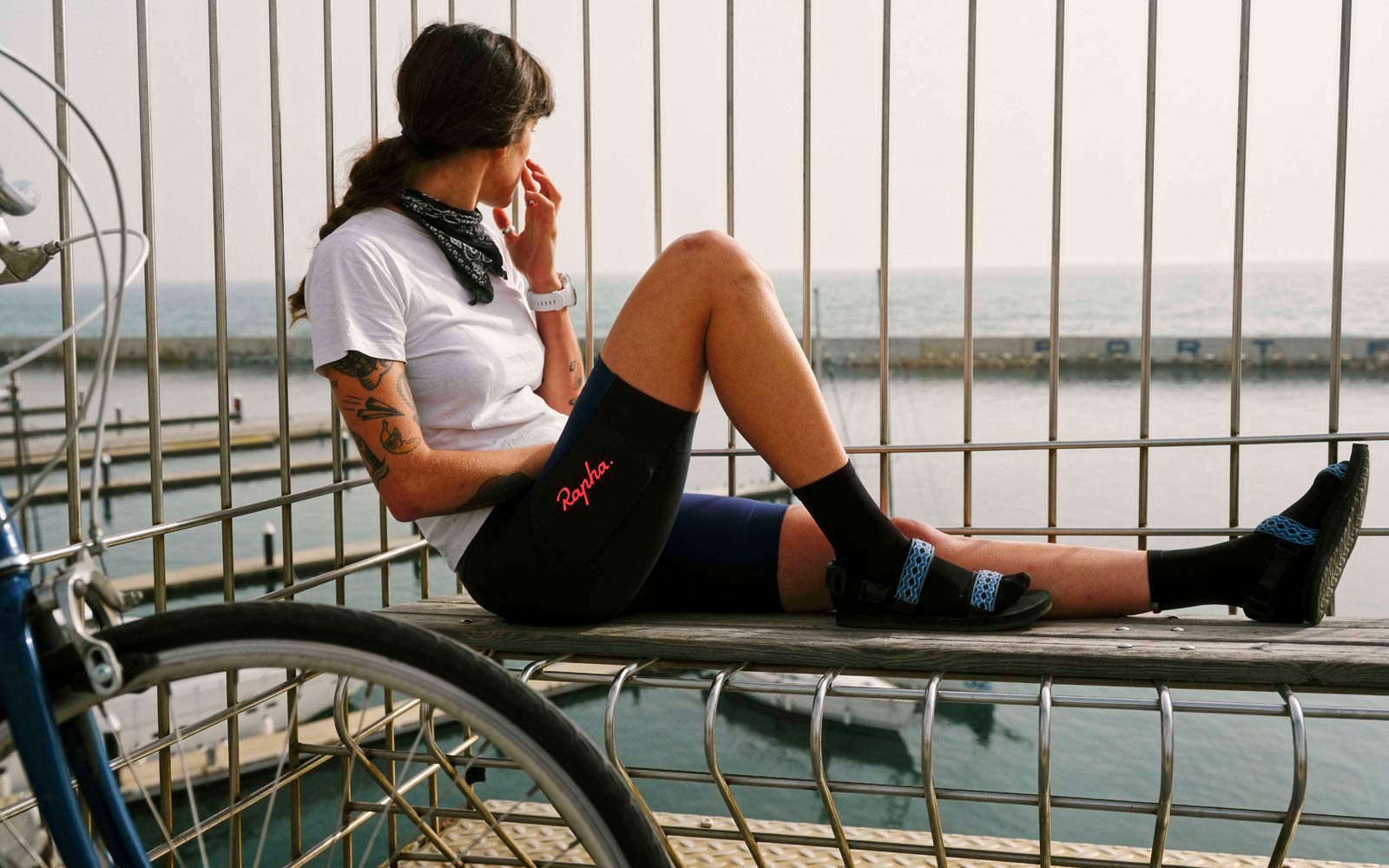We know, there’s no such thing as a stupid question. But there are some questions you might not want to ask your local shop or riding buddies. AASQ is our weekly series where we get to the bottom of your questions – serious or otherwise. Hit the link at the bottom of the post to submit your own question.
Welcome back to the Bikerumor Ask A Stupid Question series. This week, we’re addressing a poignant question by one of our readers: “Can Cycling Clothing ever really be Green?”. In order to answer this question in a constructive manner, we’ve broken it down into the following three questions:
- How is your brand working towards improving the sustainability of the cycling clothing line?
- What are the most environmentally friendly materials you use and why?
- What is the least environmentally friendly fabric you use and, what more environmentally friendly can it be replaced with in future?
This week we are joined by Rapha, Leatt and Troy Lee Designs, to find out how they are working to improve how “green” their cycling clothing is. Contributing are:
-
Duncan Coulter, the Rapha Sustainability Manager
-
Kris Kurowski, Marketing Manager at Leatt
- Craig “Stikman” Glaspell, the Global Bicycle Brand Director at Troy Lee Designs
How is your brand working towards improving the sustainability of the cycling clothing line?
Leatt: There is a short answer to this question, which is that the most sustainable path is to make good quality products that last for years of abuse. This is path Leatt has been on since the beginning and will continue to pursue.
The slightly longer and more complex answer, is that we are working step by step internally and externally to have a smaller environmental foot print. This is a long process which is constantly changing with new technology available.
All Leatt products from 2022 will come in biodegradable plastic free (and micro-plastic free) packaging. Also, many MTB garments will be made from sustainable fabrics made from recycled tree pulp in Austria as well as recycled coffee grounds.
Rapha: It is worth prefacing all of this with the caveat that ‘sustainability’ is a broad topic, covering both social and environmental issues, often in ways that are intimately connected. Given that these questions are explicitly referring to ‘green’ and materials (and for the sake of brevity) I’ll stick to environmental impacts, meaning greenhouse gas emissions, water, pollutants and waste. For those that want to know more, we’ve created an Impact & Sustainability page to share the full range of work we’re doing at Rapha, including updates on our Impact Commitments: 15 ambitious, measurable and public-facing targets that we are striving for in the coming years.
With that in mind, when it comes to the environmental impact of our clothing, we can break it down into three phases: product creation, product use and ‘end of life’.
In the product creation phase, we’re fortunate that the practice of Life Cycle Assessments, along with a body of research on climate change in the apparel sector, has been growing over the years. Because of this, we know that the bulk of our environmental footprint comes from the extraction of raw materials and the manufacturing of our fabrics. In light of this, we’ve been prioritizing our efforts in this area for the last two years.
Part of the challenge with this finding is that, like most other brands, we do not own our manufacturing facilities, so there are limits to how much we can drive change. Nonetheless, our first step in this area was to work directly with our supply chain partners to monitor and reduce their impacts.
As members of the Sustainable Apparel Coalition, we have access to a number of tools that streamline and standardize this measurement process. Through a tool called the Higg Index Facility Environmental Module, we are able to review everything from waste and water management to energy mix (% from coal, wind, nuclear etc.) at facility level.
For the 2021 production seasons we’ve been able to monitor 41% of units produced. Our goal here is to assess at least 90% of all materials and finished products in this way and work with our supply chain partners to improve their performance through greater efficiency, and ultimately through a transition to renewable energy.
When it comes to materials, we have a greater level of control and it’s reflected in our pace and ambition. Acknowledging that raw materials are one of the major contributors to our environmental footprint, we’ve committed to tackling this issue head on, and by 2025, 90% of what we produce will have transitioned over to environmentally preferred materials.

This definition originates from the Textile Exchange and includes recycled synthetic materials, organic natural fibers (such as cotton) and animal derived materials that meet a welfare standard. Our first high profile example of this was our recent launch of the Classic Jersey, made with 64% recycled polyester. Our range made from these environmentally preferred materials will grow season on season, and you can see the full list on our dedicated page.
Once our products are made, the best way to reduce their impact on the environment is to keep them in use for as long as possible. We have a stringent wear testing program and quality control process to ensure whatever we put into our customer’s hands is made to last. There is both a physical and emotional aspect to product durability – Rapha products tend to have an aesthetic that lends them to being desirable in the long term.
Beyond this, we have an innovative approach to home repairs coming up with our MTB launch, along with a free repairs service for when it’s a more technical fix. We’ve run our repairs service since our inception in 2004 and in that time we’ve repaired over 34,000 products, diverting products from landfill as a result.
Lastly, we’ve committed to set up a take back scheme, by the end of 2022, to alleviate our customers of products that they no longer want or need. Our intention here is to further extend the lifespan of these products by getting them into the hands of other riders before designating a product as having reached ‘end of life’ status and resorting to recycling. More details on what this will look like will come out in the future.
Troy Lee Designs: I guess it depends on how one defines green, but, we can all do better than we currently are and we have made slight improvements over the years in our bike line and continue to research and make changes to improve in the area of sustainability.
In 2018, we switched over our entire cycling apparel line to using Bluesign approved fabrics. For our brand this was a huge shift from a brand that once did not look at this area much at all; in addition to having a division of the business that isn’t all that ‘green’ (motocross, haha).
But, we made the switch without delivering that cost increase to our customers and our apparel lines simply got better. We have also done some low hanging fruit moves, like making our packaging smaller, using less plastic, etc.
What are the most environmentally friendly materials you use and why?
Leatt: It’s much more complex than just the material. It’s also the sourcing and the production of the product. For example, there are products in our 2022 range which are sustainably sourced from tree pulp or used coffee grounds, but the really cool thing about it is that we can radically reduce water usage in making these fabrics.
This in turn dramatically reduces the carbon footprint associated with the production of the final garment. Also, Solution dying or Spin dying is a method used to dye fabrics that radically saves energy and water and therefore also pollution. It has been used in the car industry for ages, but its relatively new to the garment industry.
Rapha: This is a tricky question to answer. If you punched all the data into another one of the Sustainable Apparel Coalition’s tools called the Higg Index Materials Sustainability Index, the material with the lowest emissions would likely be something like a Bluesign certified, mechanically recycled polyester. And yet, I probably wouldn’t choose that as our most environmentally friendly material.
It’s technically challenging and also slightly irrelevant to pit merino against cotton against polyester, because they will all have their own strengths and weaknesses, depending on the lens you see it through. Some will require less water, others will emit less carbon or require fewer chemicals in production.
Recycled synthetics may have a low carbon and water footprint, but it’s still inherently connected to the fossil fuel industry. Natural fibers may be renewable, but at scale they draw upon the land’s resources and put the welfare of people and animals at risk.
In my mind, the most environmentally friendly material has two qualities: the first is that it has reduced its environmental and social impacts to a minimum wherever possible, but the second is that it has been applied to a product in a way that is fit for purpose and intended to last.
We have a number of lightweight recycled synthetics that look great on paper, but their real sustainability attributes are that they’re applied to products that our customers will build emotional connections with and care for over time. It’s this emotional durability, paired with lower-impact raw materials and manufacturing techniques that makes for the most sustainable materials.
Troy Lee Designs: See our answer to the first question. We have experimented with recycled fabrics, but the cost has been significant and we are still learning that recycled fabrics may be more marketing than actually a green initiative.
We are a very small company with limited resources, but we have great partners helping us. We aspire to brands like Patagonia who have really set the gold standard in green apparel. We did start using ECOelite Teflon fabric in our water proof Resist line as well as some more eco-friendly finishes for wicking and DWR.
What is the least environmentally friendly fabric you use and, what more environmentally friendly can it be replaced with in future?
Leatt: We try and look at the whole garment from fabrics, seams, ink, packaging, zippers and so on. Looking at this we would say zippers, waterproof and breathable membranes, and some elastic materials is where we need to source more eco-friendly solutions without sacrificing the Leatt quality and product performance.
It is a challenge but when we do something, we like to do it right. The fabric in a garment is just one part. The next step is to ECO certify our products. We want to be able to offer our customers products with third party independent ECO certification.
Rapha: To go the other way and look at our least environmentally friendly material is a little easier, and I’ll answer the question in a more straightforward way: cotton. Cotton is a highly resource intensive crop. At Rapha, we tend to use more cotton, by weight, per product than we do other fabrics, mainly because they tend to be our lifestyle pieces. And we also produce a lot of them. So, when we ran the numbers on our material portfolio, cotton jumped out as a clear priority for us to improve upon.
Thankfully, cotton has a much lower-impact sibling in the form of organic cotton, which is becoming increasingly more available. In a single season we’ve transitioned nearly all our lifestyle pieces to organic cotton, making significant savings on carbon and water in the process. An additional benefit is that the traceability of the organic certification means we now have increased visibility into our supply chain, enabling us to give our customers assurance we’re sourcing from regions with low-risk of modern slavery. Keep an eye out for our organic cotton lifestyle collection later in the year.
Troy Lee Designs: Packaging materials are probably the thing the entire industry can do a better job at. All the plastic, the boxes, etc. is something that is next on our list to change and improve. We do get comments about the EPS in helmets and the ‘green’ effect of it. I will say, the industry has given this narrative that helmets need to be replaced every 2-3 years, as EPS degrades but that’s not necessarily true.
The resins and adhesives have more of a shelf life with UV rays, acidic sweat, crashes of course, but EPS is a pretty miraculous material and is pretty eco-friendly; it just can’t be recycled well at all.
All in all, green clothing is not easy but we are doing better than we have in years past, and we continue to improve and learn.
Got a question of your own? Click here to use the Ask A Stupid Question form to submit questions on any cycling-related topic of your choice, and we’ll get the experts to answer them for you!













